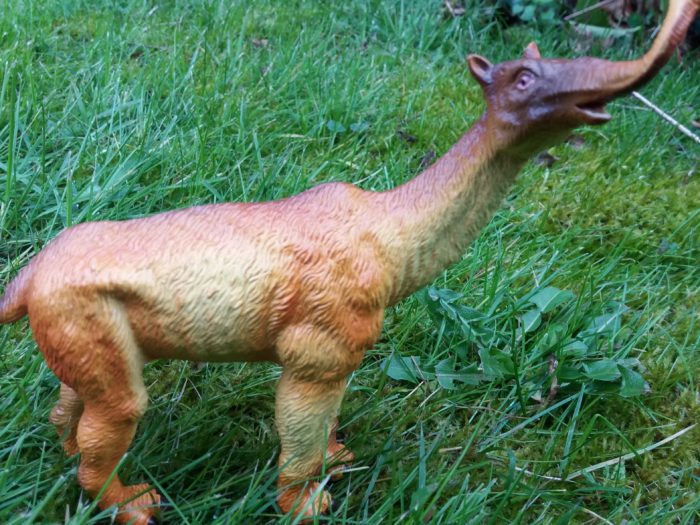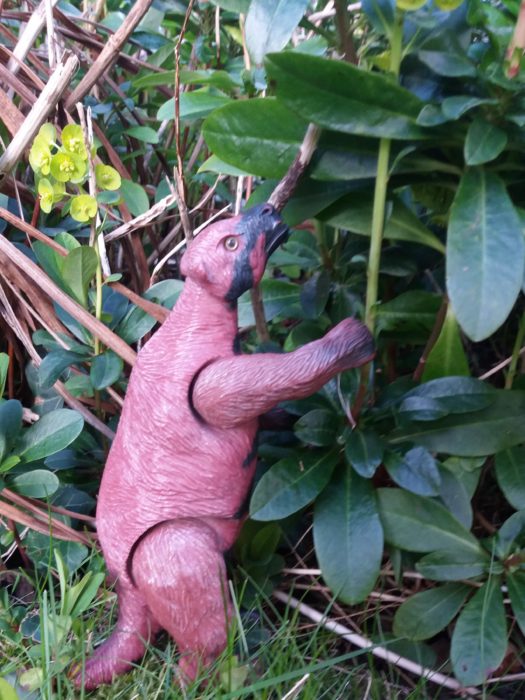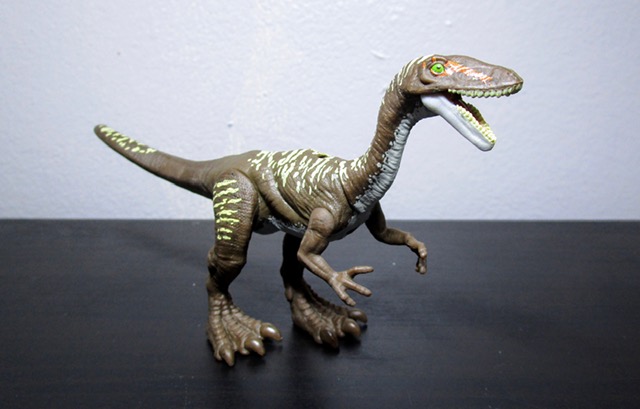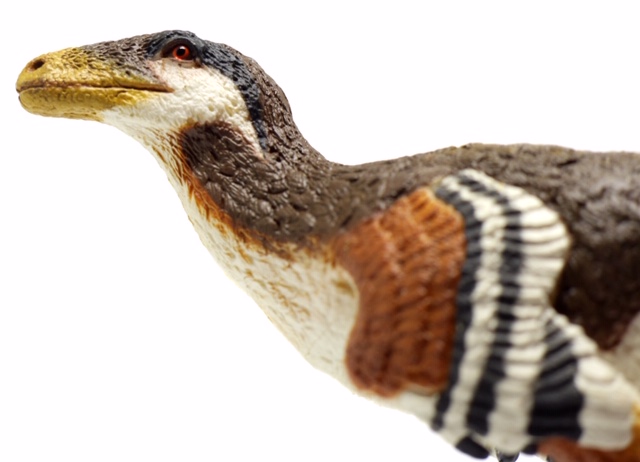The isolation of South America during much of the Cenozoic era resulted in the evolution of many odd and unique creatures, like the Liptotern Macrauchenia. This odd ungulate has fascinated many since it’s discovery by Charles Darwin, and has been the subject of many art peices and toys.
Review: Tarbosaurus (Jurassic World: Massive Biters by Mattel)
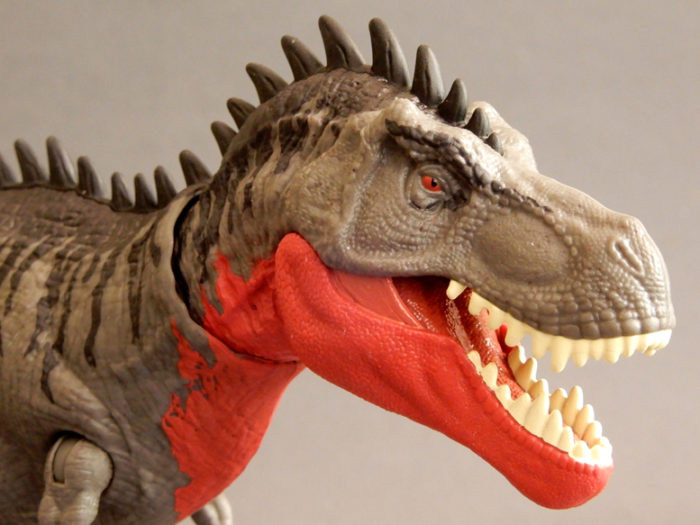
Review and images by PhilSauria, edited by Suspsy
Tarbosaurus (alarming lizard) has only one officially recognised species, T. bataar, and was a large member of the tyrannosaur family that roamed Asia around 70 million years ago. Tarbosaurus had the smallest forelimbs relative to body size of all tyrannosaurids, and that’s saying something for a member of this group!
Review: Ouranosaurus (LGTI)
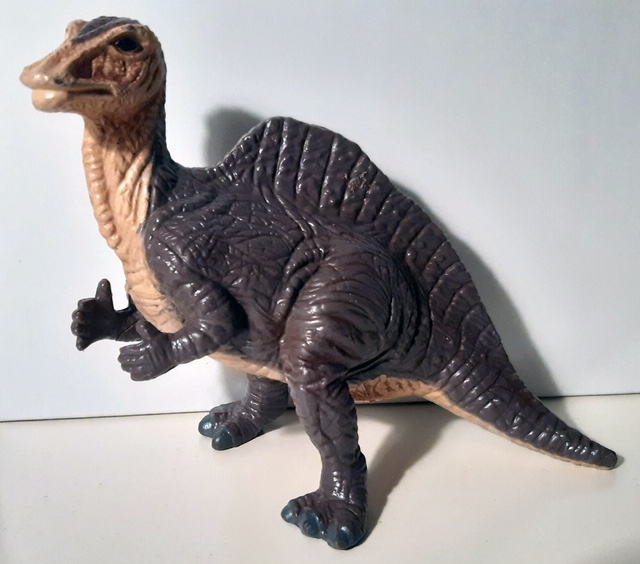
Review and photographs by Funk, edited by Suspsy
Large ornithopods without crests often look similar, with basically the same body plan, and hard to tell apart. One notable exception is Ouranosaurus, which, though named back in 1976, is still unique among ornithopods in having a tall sail formed by the neural spines of its back and tail vertebrae.
Review: Protoceratops (Definitely Dinosaurs by Playskool)
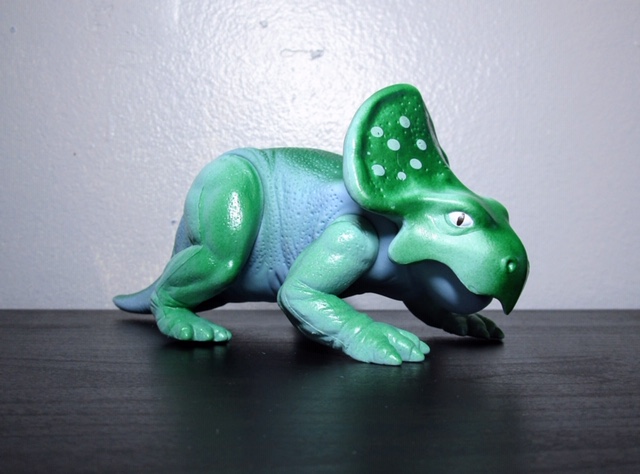
Review and photographs by Loon, edited by Suspsy
Protoceratops is the only species I actively collect multiple figures of, and luckily, many companies have released their own versions. This has allowed me to sample lines that I usually wouldn’t have much interest in, such as Playskool’s Definitely Dinosaurs.
Review: Megatherium (Tyco)
Review: Dromornis (Yowies Lost Kingdom)

Travelling through the wonderful world of Oz (as the Aussies tend to call their country) one sure plans some things before starting. I deceided to cramp a few toy figures into a box to take on the chance to shoot some of them in their “natural environment” – at least kind of, Australia sure changed a fair bit since most of the represented animals went extinct.
Review: Callovosaurus (Jurassic World: Primal Attack by Mattel)

Review and photographs by Loon, edited by Suspsy
There’s been a trend in Mattel’s Jurassic World line to not only include the various species from the films, but also ones that have only appeared in the books. This explains the inclusion of the obscure Callovosaurus, a dryosaurid known from fragmentary remains found in England.
Review: Ornitholestes (Jurassic World: Primal Attack by Mattel)
Review: Mussaurus (Jurassic World: Attack Pack by Mattel)
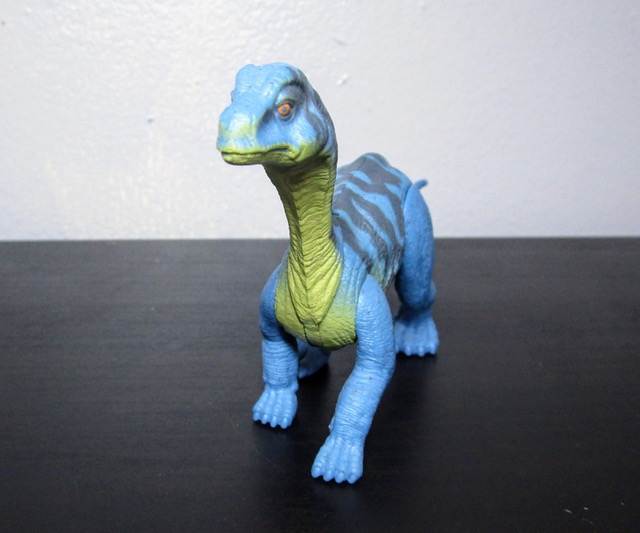
Review and photographs by Loon, edited by Suspsy.
The first fossils of the Late Triassic sauropodomorph Mussaurus were discovered in the ’70s by an expedition led by the late Jose Bonaparte in Argentina. These consisted of eggs and juveniles small enough to fit in your hands; hence the name, meaning “Mouse Lizard.” However, this name isn’t particularly fitting given that in 2013, the first adult specimens of Mussaurus were described and estimated to reach up 20 feet in length.
Review: Shringasaurus (Wild Safari by Safari Ltd.)
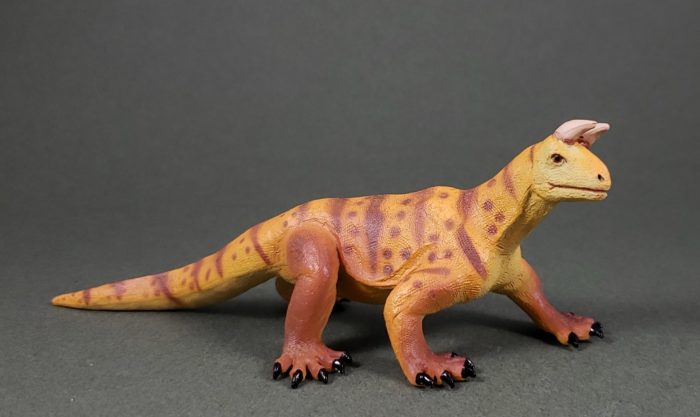
The Jurassic and Cretaceous periods featured tetrapod lineages exploring minor evolutionary variations on a handful of themes. But during the Triassic period, tetrapods evolved into all kinds of strange forms, some of which looked like slightly wrong versions of later animals. One of these is Shringasaurus, which has some features of a sauropod, a ceratopsian, and an iguana, without being particularly closely related to any of them.
Review: Pterygotus (Dinotales series 7 by Kaiyodo)
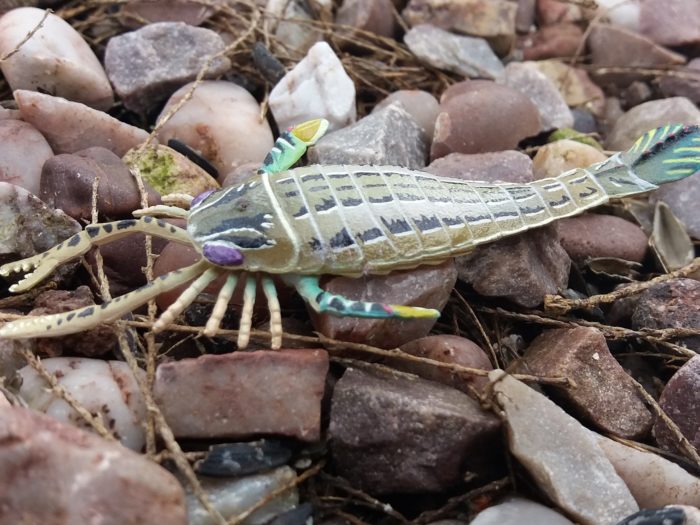
Kaiyodo has to be one of the best prehistoric animal lines out there. At a small size, they gave us a wide spread of species from across earth history in glorious detail and beautiful paint schemes. Today’s review shows just this: Pterygotus, a Silurian Sea Scorpion, one of the largest arthropods ever known, reaching a body length of 5.7 ft.

